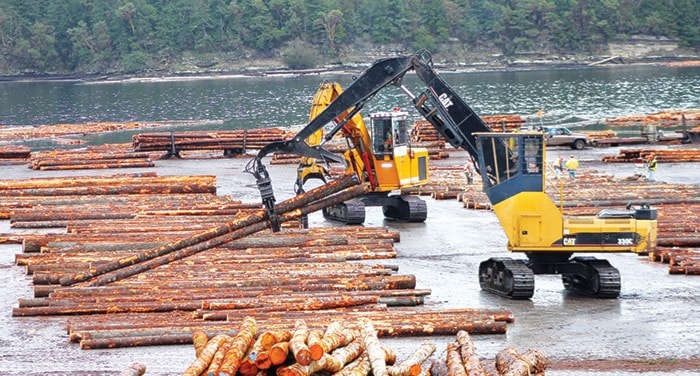Darrell Bellaart/Daily NewsSpecial to the chronicle
Ladysmith has the highest industrial tax rate on central Vancouver Island.
Heavy industry operators can expect to pay more than $106.07 per $1,000 of assessed value, almost double the next highest of cities north of the Malahat to as far north as Campbell River.
By comparison, Port Alberni taxes its two heavy industry properties at a rate of $53.78 per $1,000, and Campbell River has the third-highest industrial tax rate on the Island, at $32.39.
Other communities with heavy industry to tax charge between $7.22, in Parksville and $29.66 in North Cowichan.
In the last century, when B.C. was developing its rich resources it was understood that governments at all levels would benefit from industrial expansion.
Local communities saw industry as a ready tax source, and thriving industry didn’t mind sharing the wealth.
Times have changed, mines and mills are closing, and Ladysmith is working to become more competitive.
Municipal leaders started to take heed in the last decade, when industrial giants like Catalyst Paper warned it would close mills without tax relief.
“Council was very aware of this,” said Erin Anderson, Ladysmith director of financial services. “We used to have a greater rate, and we’ve been working on reducing our reliance on that for many years. It used to be much higher, but we’ve been whittling it down.”
No target has been set, but Ladysmith has a way to go to catch up with cities like Nanaimo, which now taxes all business classes equally, at a rate of $14.76 per $1,000.
The Harbour City decided decades ago to rein in business taxes, recognizing the value of business to a local economy.
Then, in 2006, “council of the day approved an initiative to reduce heavy industry’s rate to be on par with like industrial over a five-year (period), which they did,” said Mayor Bill McKay.
In today’s global economy, municipalities need to be competitive to attract investment, said Levi Sampson, president of Harmac pulp mill, at Nanaimo’s Duke Point industrial park.
“One thing I do know, at Harmac, going back long before I got involved, I know they worked closely with the mayor and council and had many talks about tax rates and where they should be, and I know council has worked hard over the years at looking at that,” Sampson said.
Taxes were cited as one reason the Catalyst mill in Campbell River closed.
At $32.39, that city currently has an industrial tax rate roughly a third that of Port Alberni, where together, the Catalyst mill and Western Forest Products contribute 22 per cent of the city’s total budget.
Cathy Rothwell, Port Alberni finance director, acknowledged the city gets complaints for its high taxes but said its business taxes are calculated as a multiple of its residential rate as with other cities.
That rate is much higher in Port Alberni than other Island communities because its residential property assessments are among the lowest in the mid-Island.
Asked if a higher rate discourages investment, Rothwell said the question is better answered by the city’s economic development office.
The city’s light industrial tax rate is the highest on the central Island, at $48.56, but its general business class pays $15.76, which is much closer to other Island municipalities (see chart).
She said the city derives $3.5 million from its business class, but industrial taxpayers contribute “just under $5 million” to the city budget.
In Nanaimo, city council decided long ago to lower business taxes with an eye to attracting more development.
Today, that strategy appears to be paying off.
WFP recently closed its downtown sawmill, “and now they’ve merged their employees at Duke Point, and they’re going to spend $80 million on that mill,” McKay said.
“They’ve got 70 employed and they’re hoping over the next few years to double that.”

